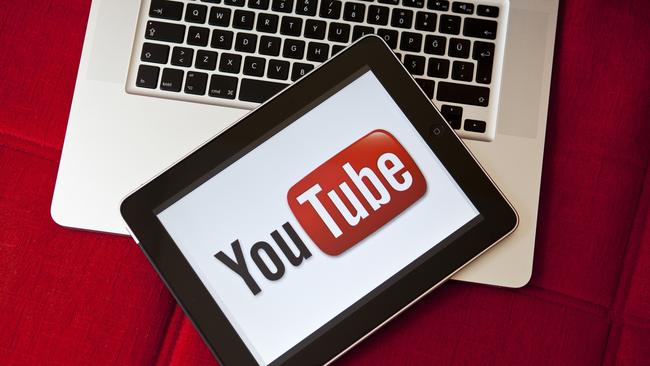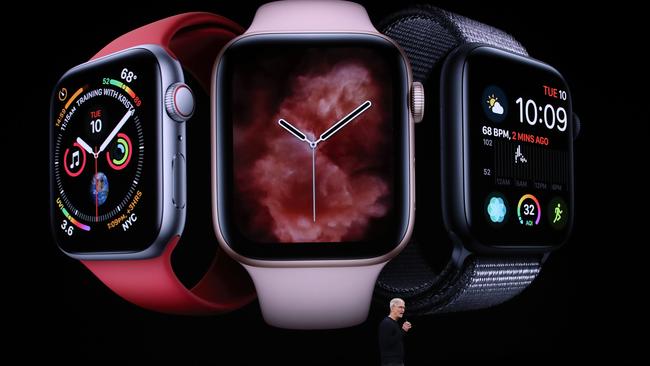Evolution of smart-tech revolution
What a difference a decade makes in the ways we entertain ourselves.

Plasma TVs were still common in 2010, CDs were still relatively popular and work on the National Broadband Network had yet to begin. It’s only 10 years ago but it feels like a different world.
Back in 2010, 4G LTE wasn’t available in Australia and service-based cloud computing was in its infancy.
Some things haven’t changed. There was concern about user privacy online in the early 2010s, and it remains a significant concern today. In 2011 US legislation was proposed to make it illegal to track individuals’ online activity and collect their personal information. It proposed allowing people to opt out of being tracked online. The legislation was dropped after industry groups apparently pledged to introduce their own voluntary code for users to opt out. They said: “We will do it, don’t worry.” But it didn’t happen. There’s a lesson in that.
Life was simpler in the world of gadgets. Smart TVs linked to the internet were around but their functionality was more limited. Netflix was offering streaming services in the US but it didn’t start officially in Australia until 2015.

You could make your own reasonably smart TV in 2010 using a media centre computer running Microsoft Windows Media Centre edition. It’s how many early adopters experienced smart TV functionality. Media centres disappeared as TVs became faster.
Television 3D came and went. It worked but there was a dearth of content. Just how many underwater adventures in 3D can you watch?
In 2010 Microsoft introduced its Kinect gesture system, which brought motion sensing to gaming. It seemed revolutionary. You could swipe gestures in front of your TV to affect the action. A reported 29 million units were sold but Microsoft discontinued it in 2017. In the end, not many games supported Kinect.
In 2010 there was no NBN but it was on the drawing board. Labor had won the 2007 election proposing it at an estimated cost of $15bn. By 2010 the government had commissioned an implementation study and NBN Co had called for tenders for the rollout.
Despite all the fallout, NBN is now predicting it will be completed by next year.
The start of the decade saw Apple introduce its first iPad. There was some concern then about whether tablets had a future, as earlier personal digital assistant tablets proved innovative but not popular buys. Apple’s own early tablet, called the Newton, had been a failure.

The iPad was modelled on the successful iPhone and there was belief in the market that it would do well, and it did. Apple sold more than 15 million in the first year.
The decade 2010 to 2020 saw the rise of wearables: smart watches, fitness bands and heart monitors, allowing people to record their personal metrics as they trained. Just over three years ago, Apple released the Apple Watch, another success for the company. Apple Watch is now up to its fifth generation.
In 2010 music streaming services such as Pandora (2000), Spotify (2008), Deezer (2007) and iHeartRadio (2008) existed but most of us resorted to downloading music to augment our collections. It took until 2016 for revenue from streaming to overtake music download revenue. Now 835 million or more people use these music streaming services.
Streaming also saw the culture of owning music change. In 2010 we bought tracks, downloaded them and owned them. Nowadays, people seem happy to subscribe to a streaming service that offers millions of tracks. This has redefined how artists make money selling their music.
Consumer technology has disrupted entire industries. Uber has severely dented the taxi industry in many countries. Airbnb has enabled ordinary households to snare customers from regular hotels. Crowd-funding sites such as Kickstarter and Indiegogo have helped start-ups find funds for their big ideas.

The decade 2010 to 2020 also has seen powerful new technologies emerge. Voice recognition has given rise to personal assistants such as Apple Siri, Google Home and Amazon Echo on your phone and in your home. Machine learning and artificial intelligence are used to identify melanoma and, on phones, to identify your friends in photos.
Biometrics — voice, face and fingerprint recognition — is used not only to unlock phones but also to unlock doors. Security cameras have been developed that use face recognition to identify dozens of people in one frame.
We can now visit virtual worlds and play immersive new 3D games by donning VR headsets, and use augmented reality to insert virtual objects into our world.
Headphones, earbuds and speakers have embedded microphones and offer noise cancellation so you can silence the background when enjoying your music.
Electric vehicles slowly are becoming affordable, driverless cars are on roads, albeit in early stages of deployment, and more large-scale battery factories are coming online to supply electric vehicles and to store energy from wind and solar.

To join the conversation, please log in. Don't have an account? Register
Join the conversation, you are commenting as Logout